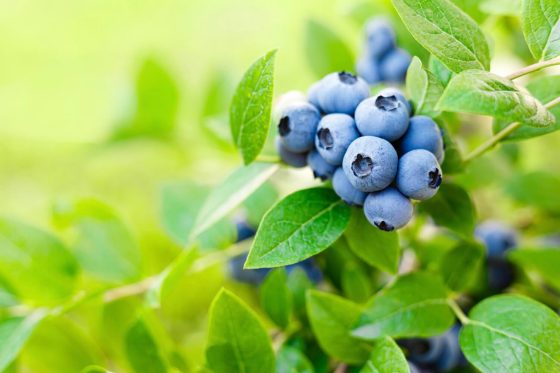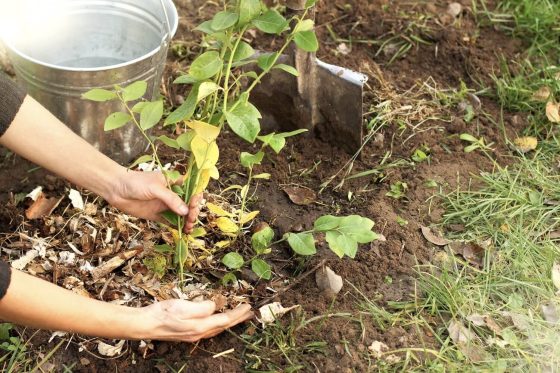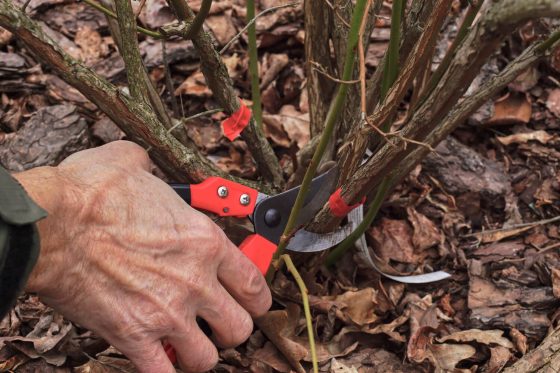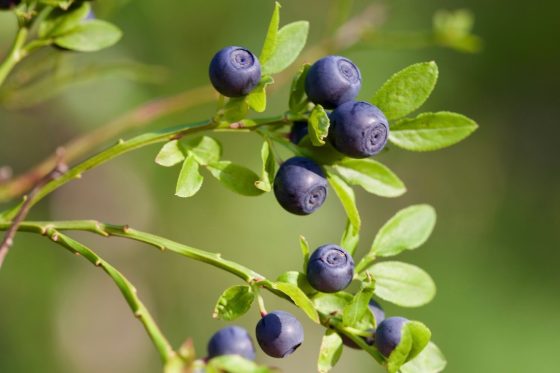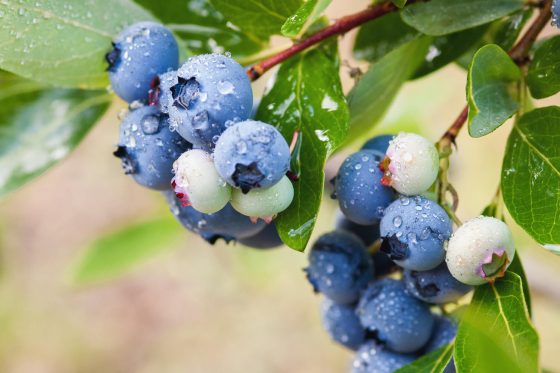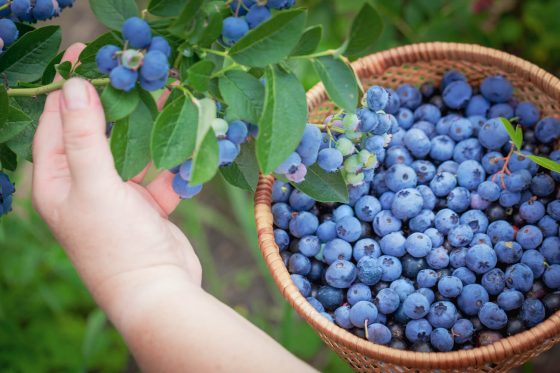Feeding blueberries: when, how & which fertiliser?
As an ericaceous plant, blueberries have certain requirements when it comes to feeding them. Discover how to feed blueberries and which fertiliser to use.
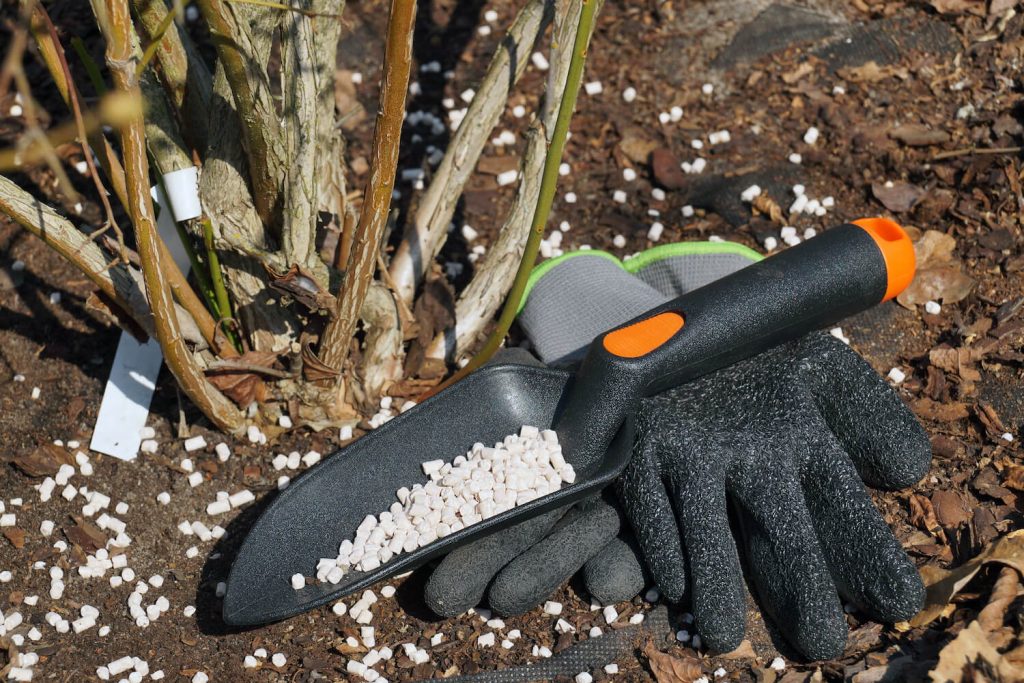
Although blueberries (Vaccinium corymbosum) require some specific care, it is well worth the effort come harvest time. Grown for their delicious and sweet berries, there is a wide choice of blueberry varieties suitable for growing at home here in the United Kingdom. However, to get the best harvest, certain conditions including fertilising need to be met.
Contents
Feeding blueberries
Just like ericaceous azaleas (Rhododendron spec. ) and cranberries (Vaccinium macrocarpon), blueberries require not only acidic soil but also specific fertiliser to grow well. Blueberry plants, like most other soft fruits, require a balance of key nutrients to support their growth. For example, nitrogen is needed to help support new growth and phosphorus and potassium to encourage flowering and subsequent fruiting. However, blueberry plants do not always require fertilising and care is needed to ensure blueberries are not overfed, which can lead to other problems.

When to feed blueberries?
When to feed blueberry plants depends on the growing conditions and how you grow them. For example, blueberries grown in the ground only require an annual mulch of ericaceous organic matter and feed in late winter or early spring. Whereas blueberries in pots have a limited amount of soil to draw nutrients from and benefit from a monthly feed from spring until the beginning of autumn.
How to feed blueberries?
If you grow blueberry plants directly in the ground on a blueberry-loving acidic soil, you can fertilise them in April with a granular feed that is high in nitrogen. For example, our Plantura Hydrangea Food can be used for fertilising blueberries in the ground, as it is specially formulated for ericaceous plants and being slow-release will feed the plants for 2 to 3 months. To apply a slow-release granular feed, apply the recommended amount to the soil around the base of the plant and carefully work into the soil with a hand trowel taking care not to damage any of the roots. Once applied, water the soil thoroughly, which will help the granules begin to dissolve and release their nutrients into the soil.
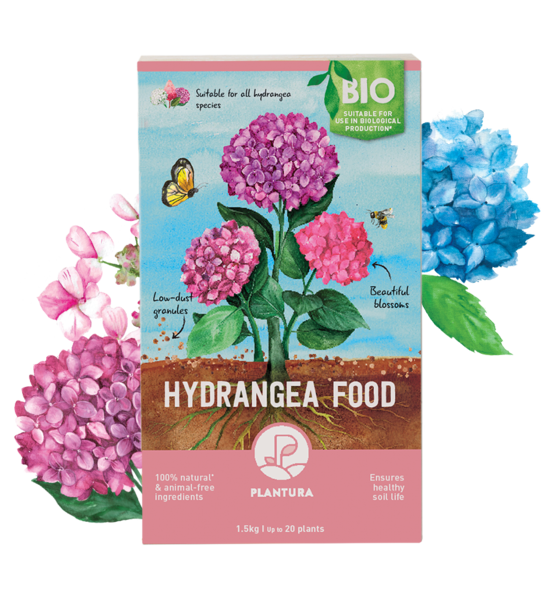
- For beautiful hydrangeas with lush blooms in pots & flower beds
- Prevents common deficiency symptoms & supports healthy plant growth
- Long-lasting fertiliser that is free from animal products - child & pet friendly
A liquid blueberry fertiliser is better for pot-grown specimens, as when applied regularly it will help quickly replace any lost nutrients and is easier to apply to a tightly bound potted root system. To feed blueberries in pots, dilute the concentrated fertiliser with harvested rainwater to the advised ratio and apply the mixture to the base of the plant using a watering can.
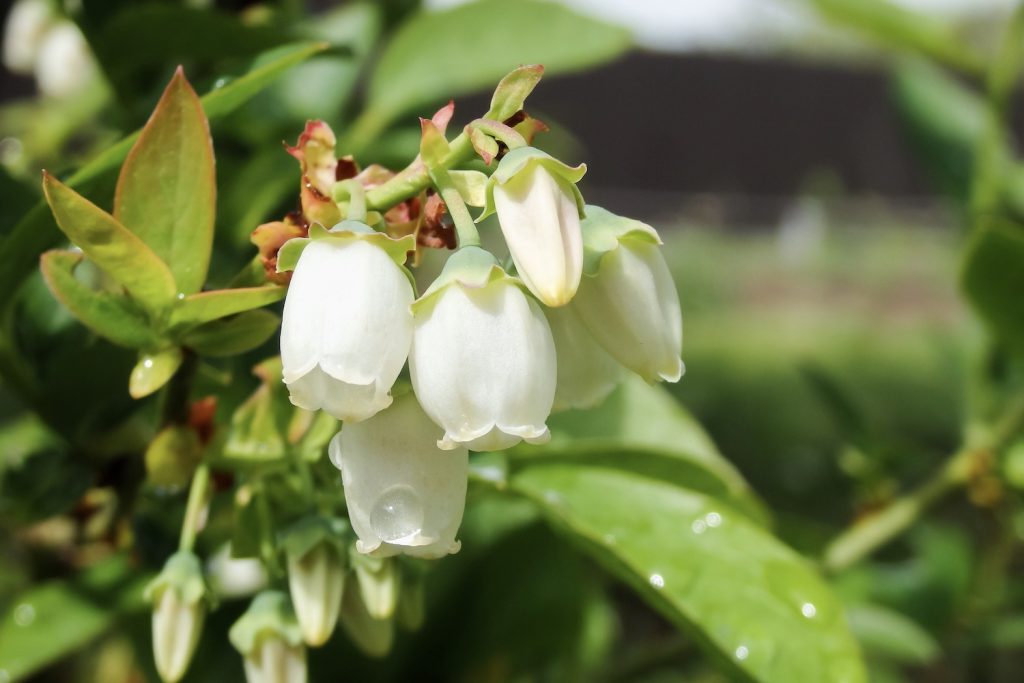
Blueberry fertiliser: what to feed blueberry plants?
If you are wondering what fertiliser to use, it is important to use an ericaceous fertiliser for blueberries such as those for azaleas or camellias (Camellia spec.) as this will help maintain the pH of the soil for better nutrient uptake by the plants. Furthermore, specific ericaceous feeds often include other minerals including iron, which will help prevent chlorosis.
It is sometimes said that coffee grounds are good for blueberries, as they are used as a fertiliser for plants and fresh coffee grounds are usually acidic. However, spent coffee grounds have a neutral pH value of around 6.5 or higher and are unsuitable for feeding ericaceous blueberries. Instead, you can use a nettle tea made with rainwater as an organic blueberry fertiliser, which is high in nitrogen and will help promote strong leafy growth.

Mulching blueberries with acidic organic matter will not only help maintain the soil’s acidity and health but fertilise the plants and encourage heavy yields when it comes time for picking and preserving blueberries. You can mulch blueberries in spring by spreading a layer 5 to 8cm thick of composted pine needles, leaf mould or ericaceous compost. For example, our Plantura Organic Ericaceous Compost can be used for mulching or potting up blueberries, as it has a pH of 4.5 to 6.5 and will also help feed the plants for the coming season. Unlike many other fruits and vegetables, using manure as a blueberry mulch is not advisable as its pH value is usually too high for acid-loving blueberries.
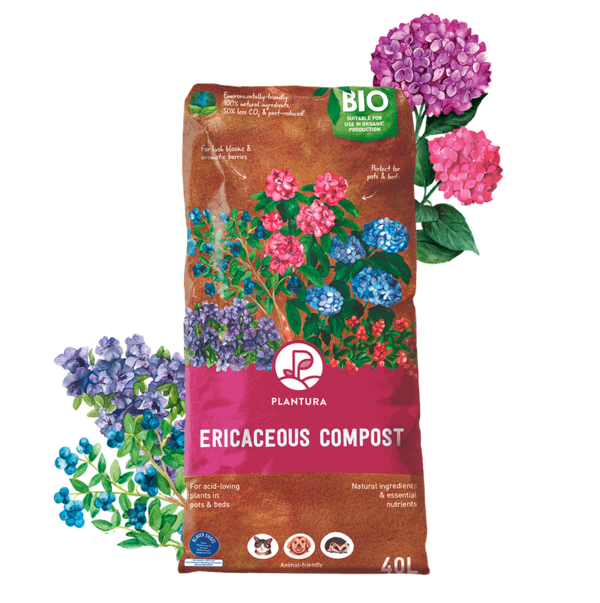
- Perfect for acid-loving plants such as hydrangeas, rhododendrons, blueberry bushes, azaleas & more
- Ensures all-round healthy plants with lush blooms and aromatic berries
- Peat-reduced & organic soil: CO2-saving composition
Similar in appearance to blueberries, sloe berries can also be eaten but are often cooked first. Learn more about sloe berries and how to grow them in our separate article.



















